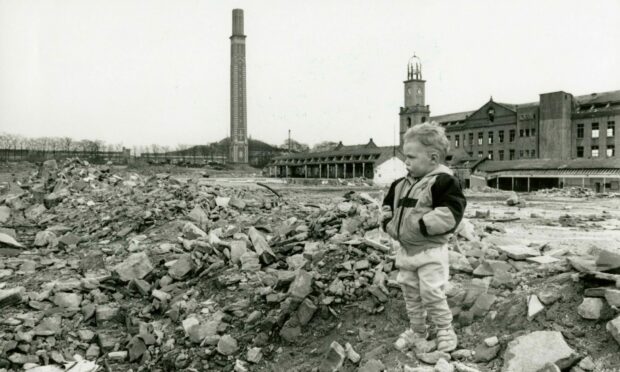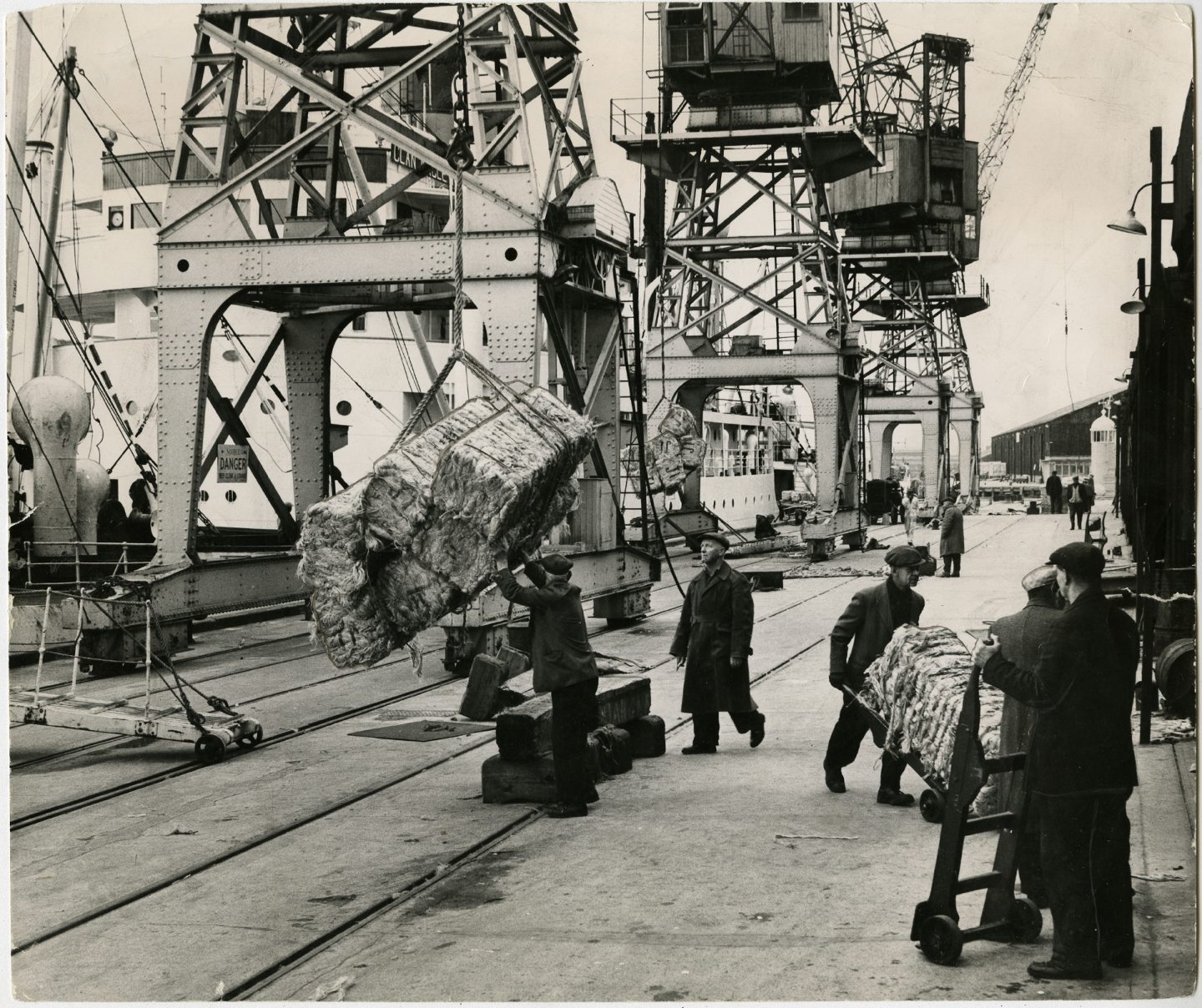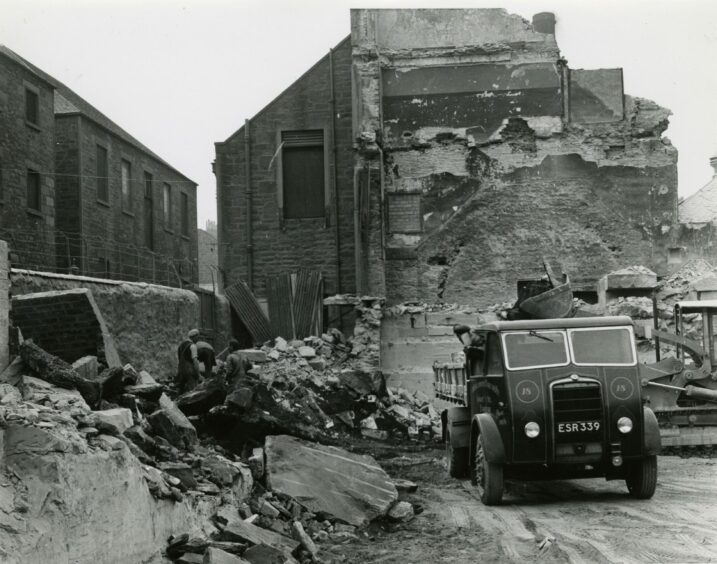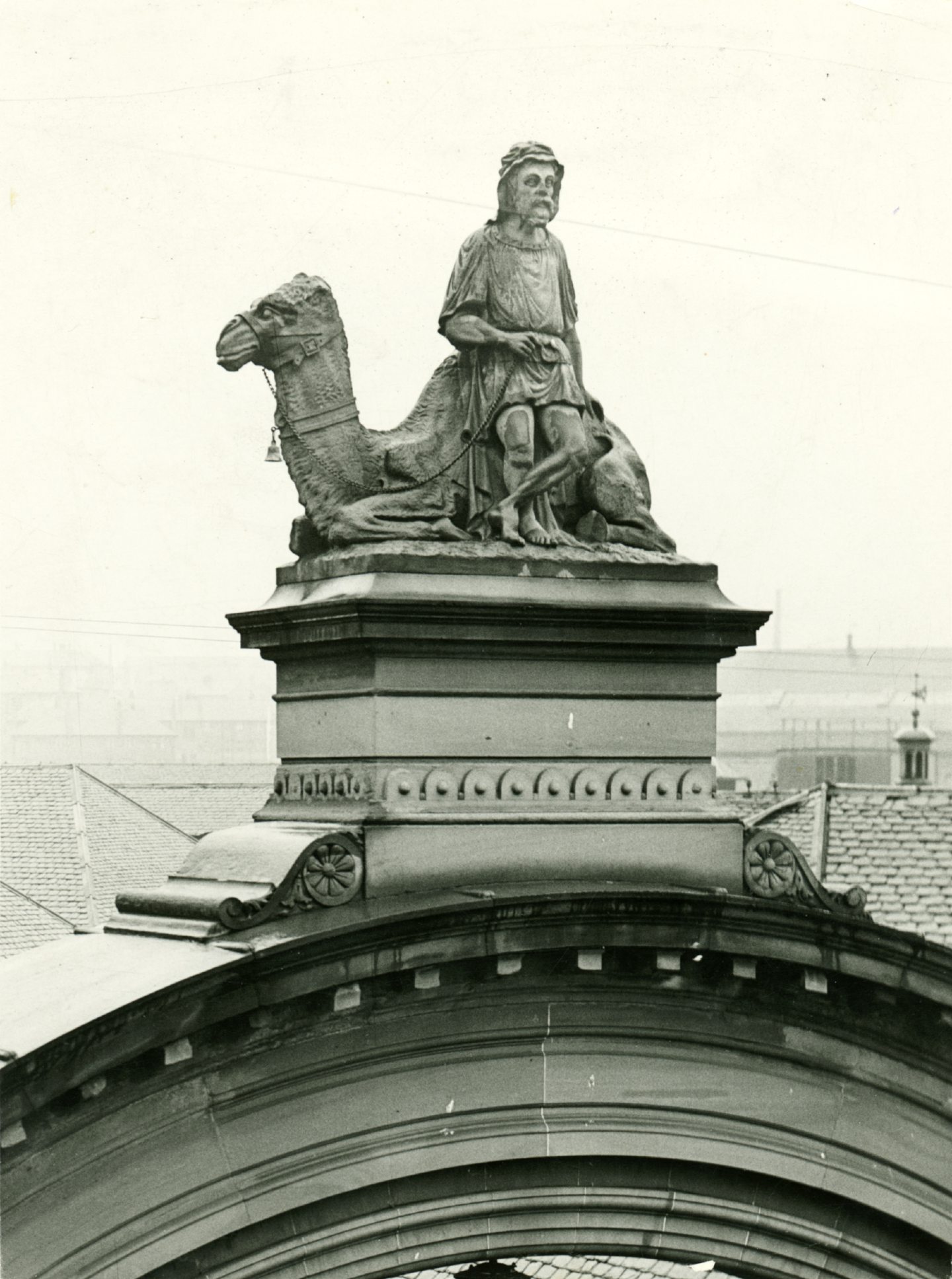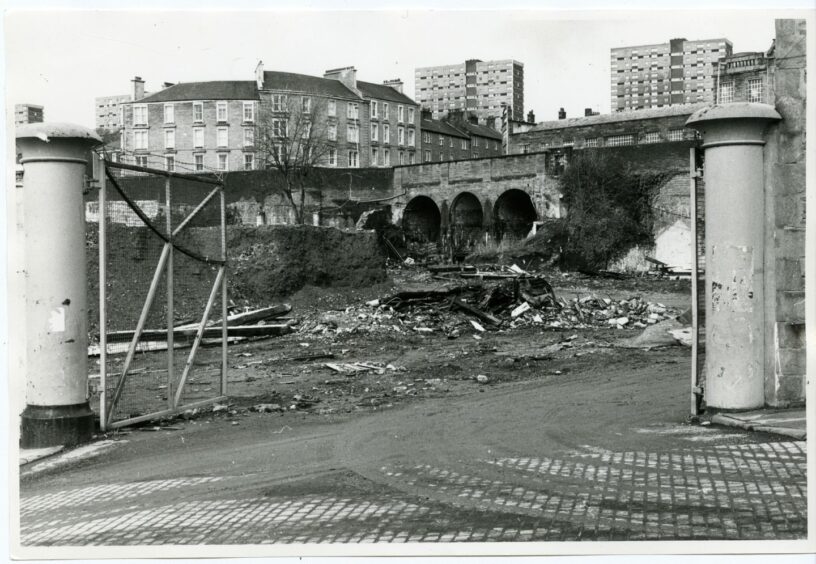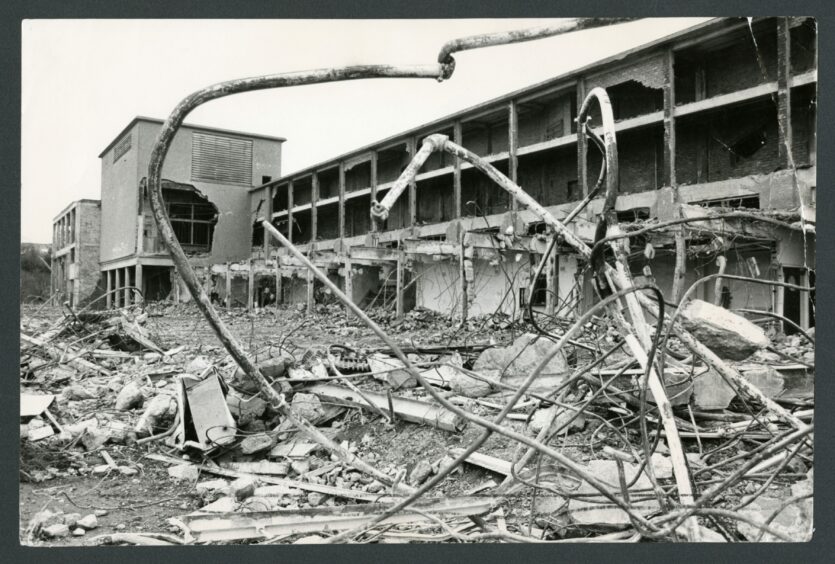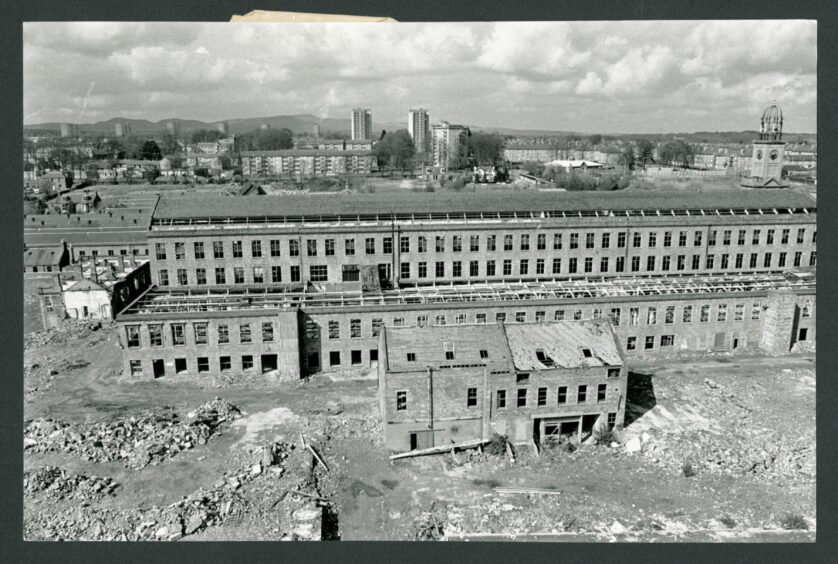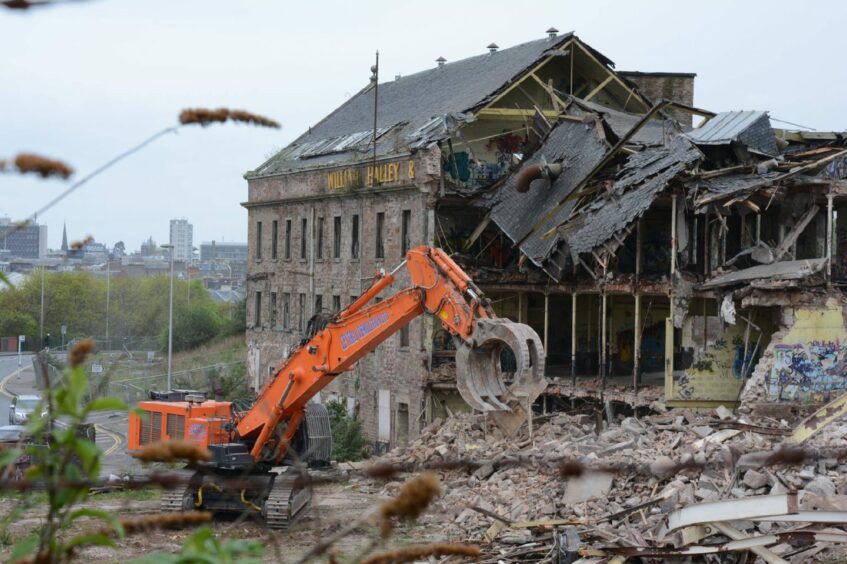Every city has its areas of wasteland where great factories used to reign.
Long before becoming the City of Discovery, Dundee was known throughout the world as Juteopolis.
At the peak of its powers, around 40,000 families were dependent on the jute industry for their livelihoods.
Mills dotted the Dundee skyline in the mid-19th Century, with its famed 282-foot Cox’s Stack at Camperdown Works becoming a landmark.
Underground tunnels fed it from 58 furnaces.
It was the chimney for what became the largest jute works in the world.
Other large mills included the Coffin Mill and the Seafield Works.
Since then, there has been a great deal of demolition work, and around 50 former mill buildings have seen second lives as homes and commercial buildings.
Local historian Dr Norman Watson said: “If jute manufacturers were slow to directly influence the domestic situation of employees through the provision of better working conditions and housing, they were prone to showing off their wealth not only on the jute palaces in which they lived, but on the mills and factories they operated.
“Extravagant architectural flourishes and magnificent iron-work, unrivalled in Scotland, captured their pride.
“A&S Hendry’s Victoria Road finishing mill boasted an opulent marble staircase, Lawside Works an Italianate cupola, Camperdown polychrome brickwork and its fantastic chimney, Tay Works magnificent obelisks and pediments; even the Coffin Mill had a trendy flat-capped tower.
“The most grandiose flourish was the exotic camel and rider modelled on Lawrence of Arabia which eventually topped the gate of Gilroy Brothers’ Bowbridge Works in Thistle Street.
“Only after manufacturers had ceded control of the industry to Indian competition and profit-trimming had begun in the 1880s did the trend change to pragmatic ‘shed-style’ mills.”
The smell of the jute mills was a physical presence in the city.
Another reality of those days was just how hard people worked.
A 50-60 hour week was unexceptional.
The industry was hit by a series of booms and slumps in the 19th Century, before falling into decline in the 20th Century.
By 1950 there were only 39 jute firms left out of a total of 150 at the industry’s peak, with polypropylene being widely used as the backing for carpets at the expense of jute.
By 1971 only 6,000 jute workers remained in a drastically contracted industry run by fewer than 20 companies.
Camperdown weathered all the storms before closing in 1981 with the loss of 340 jobs, after markets slumped to an all-time low.
The end of this iconic works showed beyond question that the era of Dundee as a great centre of the textile industry was well and truly over.
Following its closure in 1981, some parts of the complex were sold for demolition in 1985.
As late as 1989 there was still talk of a revival; more than 1,000 people were still directly employed in jute in that year.
They were the remnant of the 50,000-strong army that once flocked to the mills.
By 1991 only four mills remained in Dundee and at that point hardly anyone in the city once called Juteopolis earned their corn in the industry.
Tay Spinners, which was the last remaining jute spinning factory in Europe, closed in 1998 with the loss of 80 jobs.
The end, when it finally came, was without ceremony.
The last cargo of raw jute was delivered to Dundee from Bangladesh for processing, bringing the curtain down on a major chapter in the city’s history.
But there are those who can recall working in the mills and the kind of life that revolved around the needs of a demanding industry: a 6am start, a break for breakfast, another after midday and a 6pm finish.
Even today, when the bummers have been silent for years and most of the city’s mills have been demolished or turned into flats, jute remains synonymous with Dundee.
Dr Watson said: “Breathing new life into the old town, many of the 50 redundant textile mills which survived beyond the millennium are earning their keep in a modern setting, while continuing a solid link to the life and times of our forebears.
“Perhaps the greatest of them all, Baxter’s Lower Dens Works, once part of the biggest linen factory in the world and with its famous Bell Mill dominating the city’s eastern skyline, provides hotel accommodation with priceless views over the estuary.
“Dundee is forever changing. The once-important thread industry, its whaling and shipbuilding, the world-beating linen production – we had Linen Lords before Jute Barons – have all gone. They now live on proudly in the city’s history, culture and collective memory.”
But it was jute that made Victorian Dundee unique in Britain.
For 50 years it was a lop-sided, single-industry ‘women’s town’.
Dr Watson concluded: “Three out of every four linen and jute employees, 30,000 out of 40,000, were women and girls.
“Visit Verdant Works or the mill lass sculpture in Lochee and you can almost sense the noise and bustle of this extraordinary time.”
More like this:
Camperdown Works closure in 1981 marked the end of an era for Dundee jute empire
Hell Hole: Monifieth’s links to San Quentin State Prison’s hated jute mill
